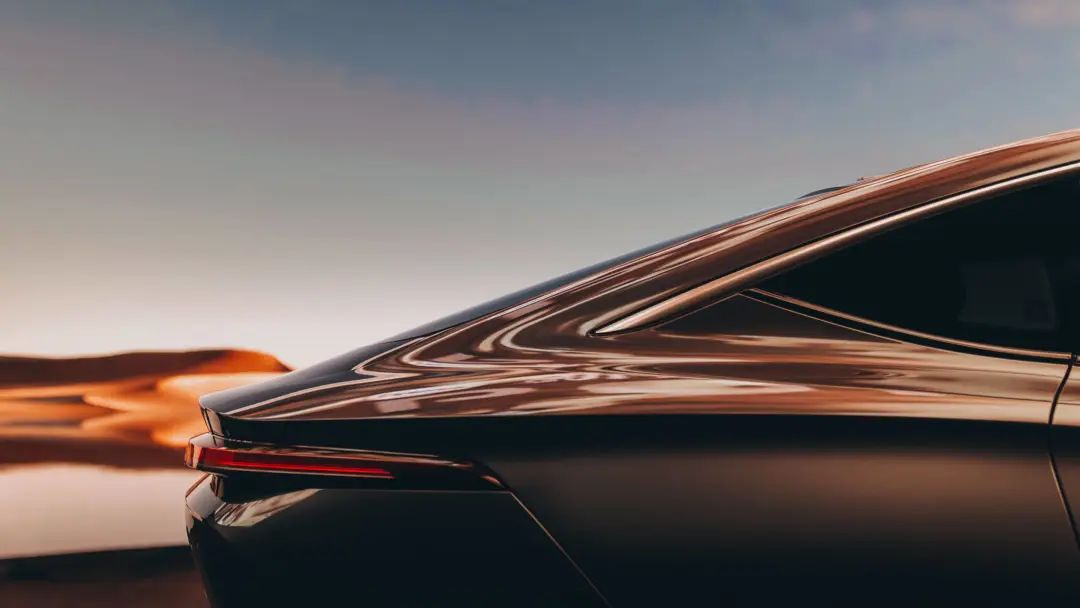Author: Guo Hehe
On February 5th, RisingAuto Motors officially released its new mid- to large-sized pure electric sedan, the RisingAuto F7, and began accepting pre-orders, with a pre-sale price range of 280,000 to 350,000 yuan. As the second product of RisingAuto Motors, the new car has advanced features, such as a 43-inch wide color three-screen display, an 8155 chip, 3D vector sound effect technology, a fully integrated advanced driving assistance system supported by 32 perception hardware, and more.
It is reported that the new car will officially go on sale in March. My colleague has taken a static experience video for everyone in advance, and if you are interested, you can click on the video. We will provide a detailed analysis of the details in the text below.
Appearance: Strong Coupe Flavor

From the appearance point of view, the RisingAuto F7 and its SAIC sibling, the IM L7, look quite similar. Whether it is the design of the lowered front end or the long and slender lines on the side, as two products of different brands under the SAIC Passenger Car Group, the design of the two cars seems to have a certain origin.
Official information states that the RisingAuto F7 is designed based on the Momentum Line potential energy design concept, and the overall design is derived from the previously released RisingAuto R-AURA Aurora concept car. It is worth mentioning that the concept car also won the Red Dot Design Award in 2020.
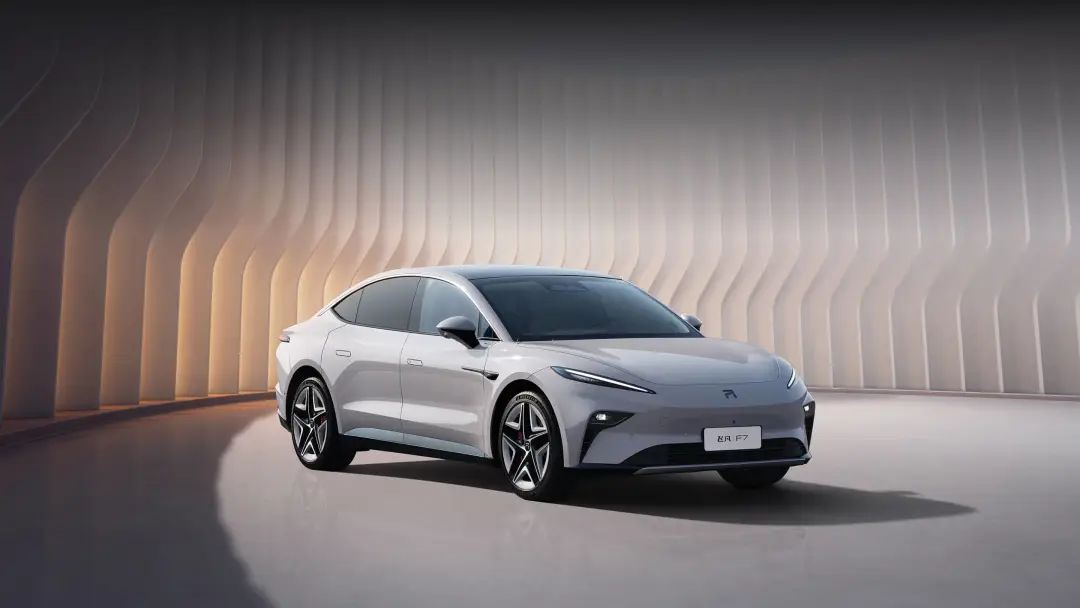 If you look closely, the F7 inherits some design elements from the F-series family, such as the slim headlight assembly, the enclosed grille, and the simple lines. There are some design elements of the F7 that resemble those of the R7.
If you look closely, the F7 inherits some design elements from the F-series family, such as the slim headlight assembly, the enclosed grille, and the simple lines. There are some design elements of the F7 that resemble those of the R7.
The side view or a 45° angle is the most elegant angle of the car, with the downward sloping front paired with the pulled back tail design, creating a forward-motion posture for the car. The double waistline extends backward to create excellent wind resistance. The F7 has an impressive drag coefficient of 0.206Cd, even lower than 0.21Cd, which is equally important to the battery capacity for pure electric cars.
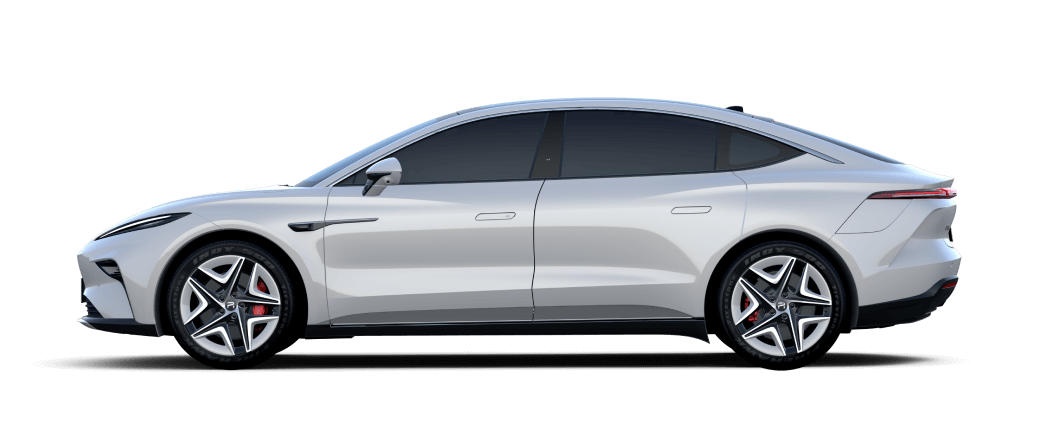
If you cannot perceive these intangible data and design, there is no problem, the F7 comes with four door frameless doors that are essential for coupes. In order to create a luxurious feel, the glass material uses double-layer laminated noise-reducing door glass, and also has an atmosphere-rich electric suction door feature. Combined with the slow downward design of the tail, it gives a feeling like those classic British sports cars.
As for the body size, the length, width, and height of the vehicle are 5000\1953\1494mm, respectively, and the wheelbase is 3000mm. From the price and body shape, the F7’s direct competitors are the Extreme E01 and the NIO ET5. The F7’s length is longer than the other two, while the wheelbase is between them.
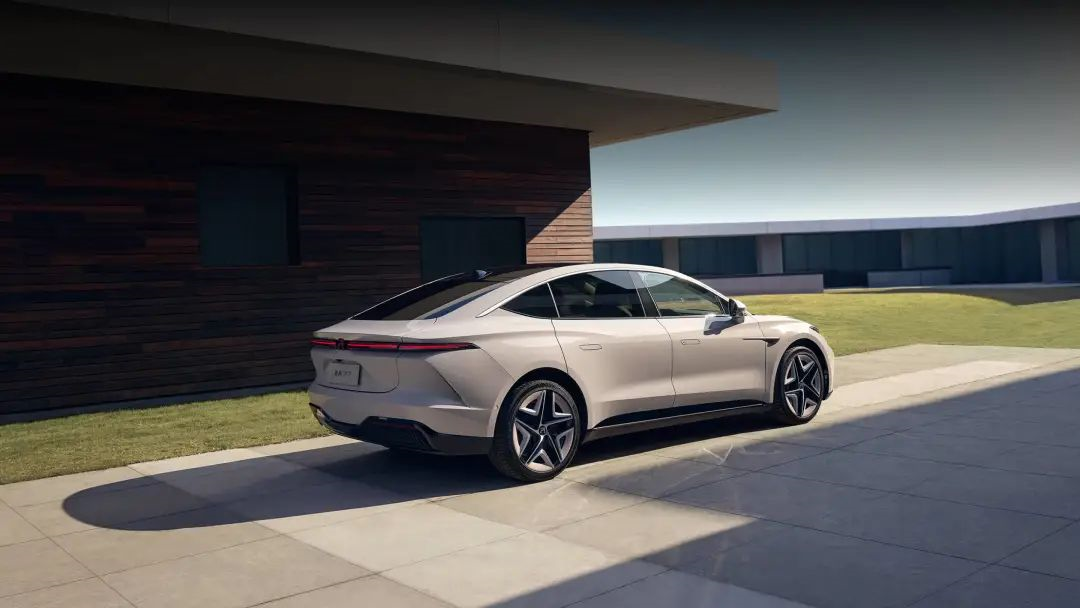
In terms of wheel design, the new car will offer various styles of wheels. The high-performance dual-motor version will be equipped with Brembo calipers and 20-inch star-shaped wheels. The tires will also be equipped with special Michelin PS EV electric vehicle tires.

The rear end of the F7 is a highlight. Firstly, the tail-wing is slightly raised to create a better drag coefficient. Secondly, although the taillight has a similar design to the running light, the F-series logo is presented in a three-dimensional form in the middle, and the lighting source around it has been smoked black, creating a highly recognizable design.
The biggest surprise of this car is that the tailgate is designed as an electric lifting type, which provides excellent internal storage space. The rear seats can also be folded down, but the downside is that the seats cannot be completely flat. The seat folding method is a rope-pulling type, which is not very convenient to use. In addition, there is no trunk cover plate, although the rear window glass adopts privacy glass, it still poses a certain challenge to the storage security.
Interior: Still the familiar smell
When you sit in the car compartment of the F7, it is easy to find that this is a member of the FOTON family. The designer still regards the three-in-one screen configuration of the R7 with the same specifications as the visual focus of the interior design.
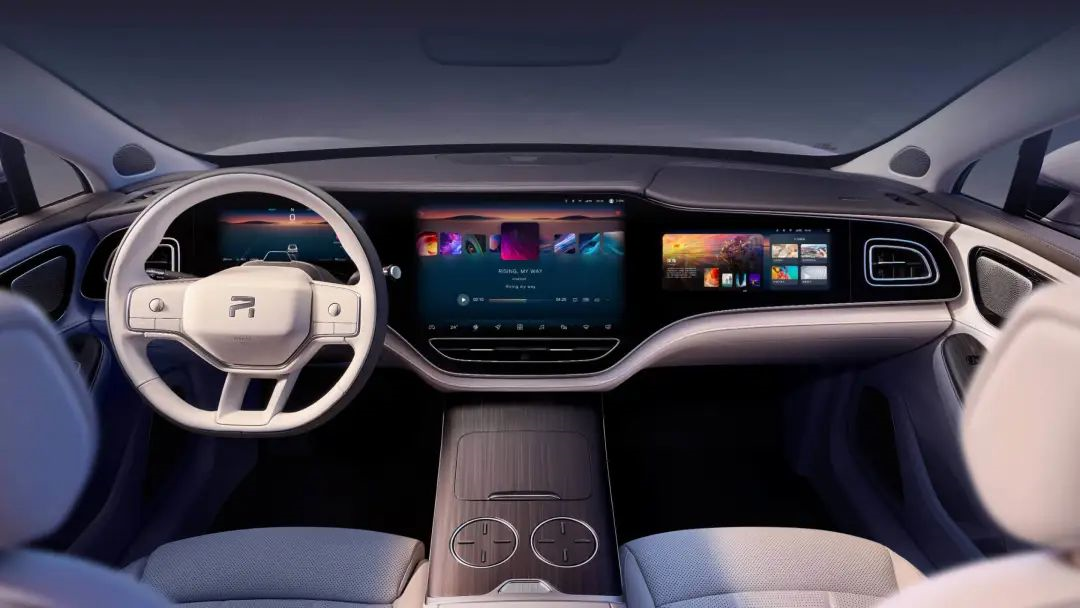
This three-in-one screen, which is pulled from left to right, is actually composed of a 10.25-inch instrument screen + a 12.3-inch co-pilot screen + a 15.05-inch central control screen. Although the black edge at the screen connection is still a bit large, the central control screen uses the latest OLED screen from BOE, which is good in resolution, and the built-in 8155 chip makes the system operation very smooth.
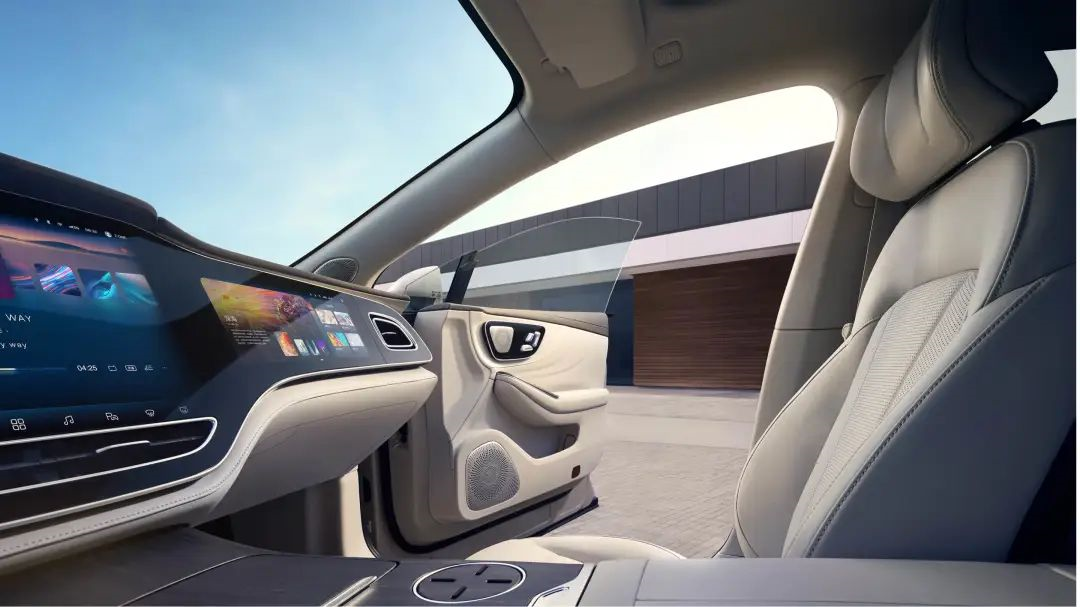
The central control area adopts a minimalist design style, with a wireless charging function under the sliding cover, and the cup holder at the back is a lifting design. The bottom is designed with a hollow, which can be said to integrate functionality and design naturally.
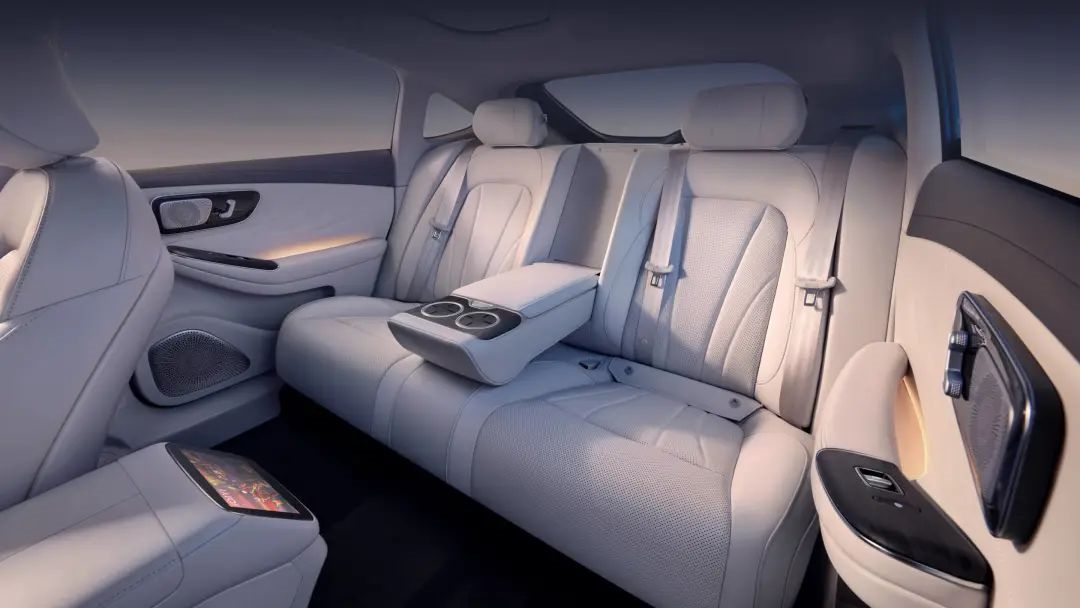
Behind the central armrest of the F7, there is also a multi-media entertainment screen which is about inches in size. In addition to the conventional rear air conditioning and other operation interfaces, it also has an independent audio-visual system, which can satisfy the entertainment needs of rear passengers in a short time. However, considering that the position of the screen is relatively low and the screen size is similar to that of an iPad mini, it is a greater pressure on the cervical spine to watch the screen for a long time, so it is more suitable for emergency use.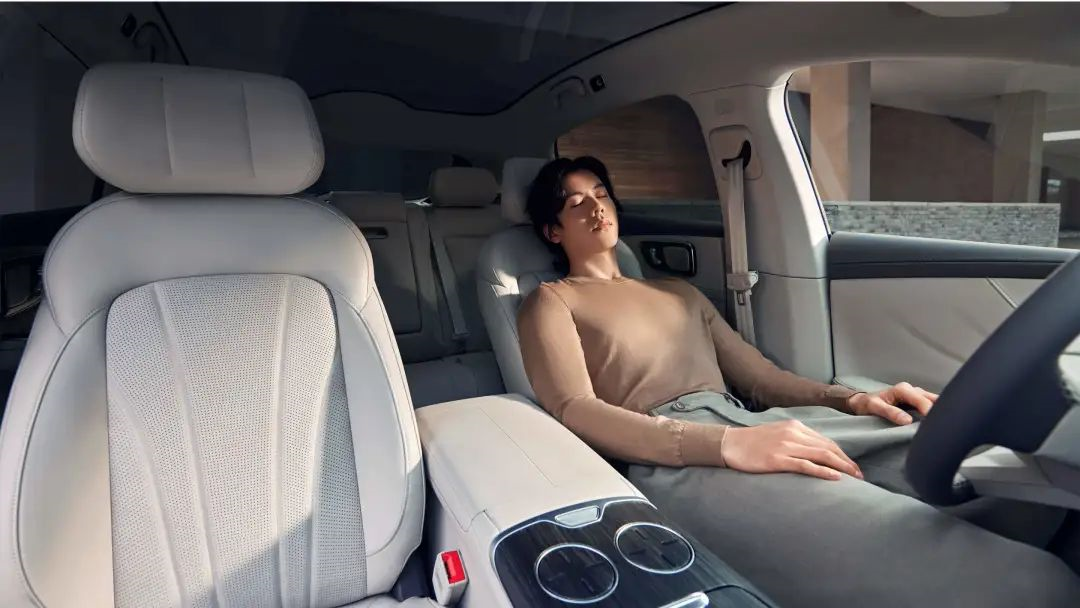
In terms of space, thanks to a 3000mm wheelbase, the official data shows that the rear seats of FeiVan F7 provide users with the longest front and rear distance among peers, which is 962mm. In addition, to highlight the comfort of the seats, the official equipped the “Bach seat”, which is a sunken, wrapped seat with comfortable material that can perfectly accommodate the curves of most people’s bodies.
Power: 3 Seconds Club
In terms of power, FeiVan F7 has two versions: rear-wheel drive and four-wheel drive. Even the rear-wheel drive version with a single motor has strong power. The peak power of the rear-wheel drive version’s motor is 250 kW, and the peak torque is 450 N·m. The 0-100 km/h acceleration time reaches 5.7 seconds. The peak power of the four-wheel drive version can reach up to 400 kW, and the peak torque can reach 700 N·m. The 0-100 km/h acceleration time reaches 3.7 seconds, which enters the 3-second club.

In addition to power, the chassis configuration is also a highlight of FeiVan F7. It uses a lightweight aluminum alloy chassis and four-wheel independent suspension with front double wishbone and rear five-link.

Regarding the battery, FeiVan F7 provides two specifications: 77kW·h and 90kW·h. The thickness of the battery pack is 125mm for 90kW·h and only 110mm for 77kW·h. Therefore, the ground clearance of F7 is theoretically much lower than other electric cars. In addition, FeiVan F7 offers an optional battery swap mode. Its CTP power battery pack adopts a unified design for length, width, and battery housing, and different thicknesses of the battery pack correspond to different battery capacities, covering an energy span of 77-90 kWh+. It supports 2.5-minute fast swapping.
It is worth noting that only car owners who rent batteries can choose battery swapping. Car owners who buy batteries cannot enjoy this feature. Regarding the construction of battery swapping stations, according to FeiVan, it is vigorously promoting the transformation of more than 50,000 national gas stations of Sinopec and PetroChina into comprehensive energy service stations with both charging and battery swapping capabilities. The plan is to build nearly 40 comprehensive energy service stations around Shanghai, Beijing, Shenzhen, Guangzhou, Chengdu, Tianjin, Hangzhou, Suzhou, Nanjing, and Zhengzhou by 2023. At present, two battery swapping stations, the Automobile Anting International Expo Park and Nanxiang Impression City, have been put into use in the Shanghai area.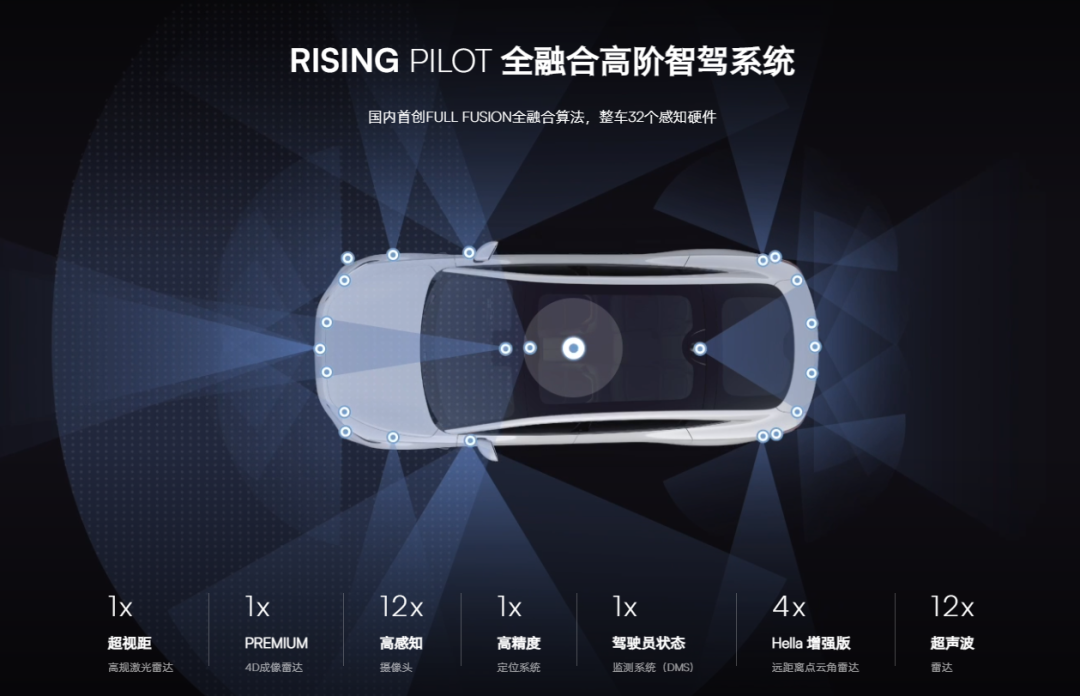
In terms of intelligent driving, the hardware configuration of the entire vehicle is quite good. The vehicle is equipped with a total of 32 perception hardware including LiDAR, Continental PREMIUM 4D imaging radar, an 8 million pixel camera, and an enhanced long-range point cloud corner radar, which supports fully integrated high-level intelligent driving scenarios. The assisted driving chip also uses the Orin super computing chip, with a single chip computing power of up to 254 TOPS, which is about 8 times the computing power of the previous generation Xavier chip.
Summary: A Promising Future
From the price range of 280,000 to 350,000 yuan, the RBS vehicle-electronic separation mode is included. The 77 kWh battery version can be reduced by 84,000 yuan, and the 90 kWh battery version can be reduced by 100,000 yuan. The starting price of the FF F7 may touch within 200,000 yuan. For a new generation of electric coupe with excellent hardware and backed by SAIC’s huge technical team, the sincerity given by FF F7 is really enough to attract attention.
This article is a translation by ChatGPT of a Chinese report from 42HOW. If you have any questions about it, please email bd@42how.com.
